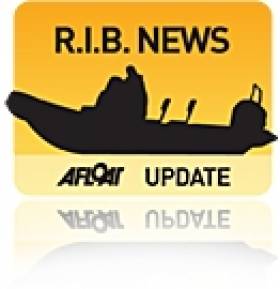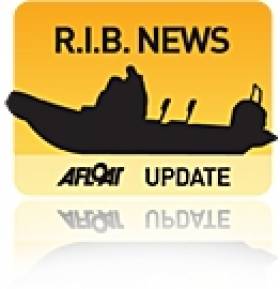Displaying items by tag: Avon
Avon Jet RIB Range on Show in London
#AVONRIBS – Worldwide specialist Jet RIB tender designer and manufacturer Avon is displaying its entire 2012 Seasport Jet Tender range at the Tullett Prebon London International Boat Show 2012 today.
The recently launched Seasport 380 Jet Tender will be accompanied by the recently upgraded Seasport 330 and 430 Jet Tenders.
All three tenders in the Seasport range are powered by a super-charged, 4-stroke HP jet engine, providing a safe yet exhilarating experience on the water. The entire range is now available in three tube colours including grey, navy blue and camel, and are equipped with high quality flush mount stainless steel fittings, maintaining the innovative and stylish design that has become synonymous with AVON tenders.
The new AVON Seasport 380 Jet Tender provides a large amount of internal space and includes seating for up to five adults and one child (under 37.5kgs). The tender offers upholstered seating for two passengers at the rear and up to three seats at the bow. Depending on the model size, the Seaport 330 and 430 also benefit from these seating upgrades.
Manufactured using high quality Hypalon™-Neoprene™ fabric, the tubes are now removable on the Seasport Jet 380 and 430 for easy maintenance. The Hypalon™- Neoprene™ tubing has been extensively tested to prove that it is seaworthy in all conditions, including exposure to UV rays in tropical conditions.
Upgrades to the Seasport Jet Tender range include upholstered seats as well as the option to include a luxurious teak deck, now also available in synthetic, and a telescopic bathing ladder. All three Jet Tenders have an adjustable steering wheel angle which enables easy storage inside the garage or on the stern platform or flybridge of the yacht. All of these features have been designed with ease of use and the comfort of the user in mind.
The latest AVON Seasport Jet Tender range is on display at the Tullett Prebon London Boat Show. For more information please visit stand H105
The Avon SeaRider Becomes the Zodiac SeaRider
One of the best known RIB makes in the world, the Avon Searider, with hundreds in service with schools, clubs and commercial organisations around Ireland, and literally tens of thousands with similar organisations all over the world, has been treated to an upgrade and will now be sold as the Zodiac SeaRider.
Avon has been owned by Zodiac for many years now, but up until now, the two ranges were sold under separate brand names, and through separate distribution networks.
As part of a wider product integration programme, both ranges will now be sold exclusively through the Zodiac network, and under the Zodiac brand name.
This programme has already seen upgrades to the specification of the Zodiac Grand Raid range of inflatables, long established as the benchmark for commercial inflatable boats, as well as to the Avon W range of WorkBoats, now known as the Zodiac WB range of WorkBoats. These upgrades include even heavier Hypalon fabric, heavier duty standard equipment, new features fitted as standard, and a wider range of heavy duty consoles and seating.
The SeaRider range will continue to be built in the Avon factory in Llanelli, in Wales, as will the new WB series of WorkBoats, ERB Rescue Boats etc. They still offer the same outstanding performance, feature the same materials, and same "bulletproof" construction. The flooding bilge design provides ballast to make the SeaRider a stable platform while stationary at sea.

This feature is a hallmark of the SeaRider range, and is indespensible to divers, port authorities, military and race managers alike. The photo above shows a prototype SeaRider 5.4m in mid air, with old style Avon fendering. The first models in the New Zodiac SeaRider livery are due in Ireland within the next 14 days, and they look really well with the dark grey hull and deck, grey tubes and extra wide heavy duty black fendering.
Zodiac SeaRiders will also be available to special order in the old Avon colour scheme of Grey tubes with Orange Hull and deck - this will involve a slightly longer lead time, but gives fleet owners the possibility of adding new boats to their fleet in the same colour scheme as existing boats. The new Zodiac MilPro catalogue, incorporating models from both Zodiac and Avon ranges will be available shortly. However, we wanted to bring this news to you as soon as possible and we will contact you again with more information in the near future.
The sole importer for Zodiac in Ireland is Western Marine in Dalkey, Co. Dublin.































































